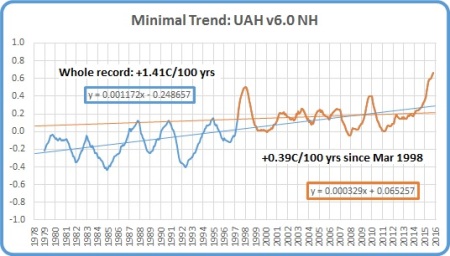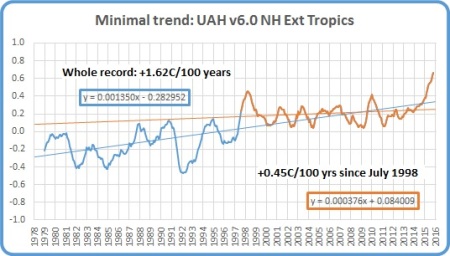Last Sunday was a miserable day in Rockhampton- overcast with drizzling rain and cold all day. Mean maximum for October is 29.7 degrees, so the maximum reported by the Bureau of 20.4 was 9.5 degrees below average, as expected. However, that does not tell you anything like the whole story.
Here is the temperature graph from the Bureau for the period midday Saturday to midday Tuesday. The solid horizontal line shows the duration of Sunday 23rd, and the thin black vertical lines show 9.00 a.m., which is the time when the daily minimum and the previous day’s maximum are recorded. Temperatures at recording times are circled.

On fine, clear days, minima usually occur around sunrise and maxima in the early afternoon: you can see this on the 22nd, 24th, and (almost) on the 25th. Sunday 23rd was wet. As you can see the temperature was falling fairly steadily from Saturday afternoon until Monday morning. The maximum for Sunday was 22.7 at midnight, and the coldest temperature on Sunday was 14.3 from 7.30 p.m. to 9.00 p.m. on Sunday night- not the 17.6 at 9.00 a.m. The official maximum for Sunday of 20.4 degrees was actually the temperature at 9.00 a.m. on Monday!
So what was the Diurnal Temperature Range? Was 20.6 (or 22.7) a good representation of how high the temperature “rose”? The temperature in the early afternoon varied between 15 and 16.4, and this was about 14 degrees below normal for this time of the year (and two to three degrees below the official lowest maximum of 18.1 on 10th October 1982).
Which is one reason I don’t take a lot of notice of claims of hottest or coldest extremes.














